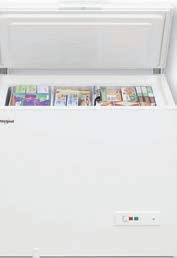


























































ontractors perform important work for millions of homeowners every day. Home improvement projects are complicated undertakings, and the experience of skilled contractors can ensure jobs are completed on time and within homeowners’ budgets.
Homeowners have undoubtedly heard horror stories from neighbors about projects that have gone awry. Projects can go sideways for a number of reasons, but a skilled contractor can help homeowners navigate such situations successfully. That underscores how important it can be to find the right professional for the job. The following are some tips homeowners can consider as they look to hire a contractor.
Identify which professional you need. Some contractors are of the jack-of-alltrades variety, but many specialize in a particular line of work. It’s important that homeowners identify which type of contractor they should work with prior to starting a project. This requires homeowners to define the goal of the project (i.e., new wood floor installation), which can serve as a springboard into finding the right type of contractor.
and permits as they interview contractors. Projects that do not adhere to code are illegal and can compromise homeowners’ ability to sell their homes in the future. So it’s vital to work with contractors who are familiar with local codes and aware of which permits are necessary to ensure a project can go forward.
Insist on written estimates. Handshake agreements offer no protection to homeowners or contractors, so estimates indicating what will be done and how much the project will cost should be provided. Homeowners should insist on receiving written estimates and interpret an unwillingness to provide one as a significant red flag.
Know your rights. Laws vary by region, but in general homeowners have a right to a written contract and contractors are obligated to provide a copy of that contract signed by both parties. That contract must be provided prior to the start of the project. The contract should provide a detailed account of the work that will be done, as well as a timeline indicating important dates that components of the project will begin and be completed. The contract also should detail materials and who is providing them. Details regarding payments, guarantees and warranties also should be cited.


Prioritize building safety. Safety should be the utmost priority for homeowners and contractors alike. Prior to hiring a contractor, homeowners should identify any safety restrictions that might be enforced by local governments and take note of all the permits necessary to get a job done. Homeowners can then discuss those restrictions
Contractors help homeowners turn dream projects into reality. Homeowners can employ various strategies to ensure they find the right professional for their home improvement project.







































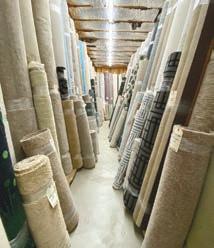



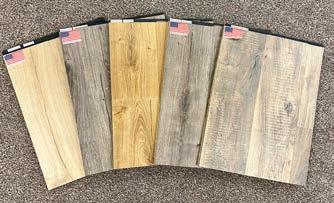










































































tives to make it easier to upgrade to more energy-efficient models.
Whether you are looking for a heat pump water heater or a more conventional option, here are steps to help identify the ideal water heater for any home.
Assess your hot water needs:
The federal-level Inflation Reduction Act passed in 2022, along with a variety of state and municipal programs, which can be found through tools such as Rheem’s Rebate Finder website, offers rebates and tax incen-
Keep in mind the number of people in the home and estimate hot water usage (in gallons) for activities like showering, dishwashing, laundry and cooking. Identify peak usage periods such as mornings and evenings when the demand for hot water likely increases and consider available energy
sources.
Choose the right type of water heater
Each category of water heater has its own set of unique advantages. Selecting the right one depends on each household’s specific needs, budget and space availability. Many companies offer a full line of heat pump, tank and tankless water heaters, each designed to meet the demands of diverse homes and occupants while providing long-term savings.
With three primary types of water heaters, here’s what each style has to offer.
Heat pump water heaters (HPWH): These units use electricity to move heat from the air to heat the water, making them significantly more energy-efficient than conventional electric water heaters. Benefits include lower environmental impact due to their high efficiency. These units also provide savings on
energy bills. In fact, by upgrading to a more efficient heat pump water heater, the average homeowner savings could reach $1,800 over the appliance’s lifetime, with more advantages for renters and low-income households. All of these features make HPWH’s a cost-effective option for the long-term.
Conventional storage tanks: Available in electric, propane and natural gas options, these units can store a large volume of hot water in a tank that is ready for use at any time and maintain it at a set temperature until needed. Features include a lower initial install cost and the ability to provide hot water during power outages (for gas models). Keep in mind that tank-type options require more floor space than a tankless water heater






















































































































































































and use energy to replace heat losses from the tank.
Tankless water heaters: Also known as “instantaneous” or “on-demand” water heaters, tankless models are available in natural gas, propane and electric - and heat water only when it is needed. Tankless technology does not store hot water, rather it heats the water as it passes through the unit, providing a continuous supply of hot water. These units are much smaller than conventional tanks, which helps to save space. Homeowners will see long-term benefits while saving on energy bills, as energy isn’t wasted on maintaining hot water. Heating water instantaneously requires high energy consumption for a short period of time, so a review of the home’s existing electrical or gas systems to ensure they are compatible with the chosen model is recommended.
Consider energy efficiency and technology features:
Energy efficiency and decarbonization:
Energy-efficient models employ advanced technologies to minimize energy waste. This provides homeowners with substantial savings on monthly energy bills while also lowering greenhouse gas emissions. Additionally, a number of environmentally- and budget-friendly options exist, with many water heaters being ENERGY STAR® certified.
Regulatory changes: The DOE’s new energy efficiency standards for water heaters, effective in 2029, aim to save consumers billions in energy costs. Electric water heaters




will shift to heat-pump technology, using less than half the electricity of older models, while gas-burning heaters must also meet higher standards. To maximize savings and ensure compliance with the latest standards, it’s essential to select models that comply with the new regulations. Be sure to check the updated standards and guidelines to make an informed decision.
Technology and innovations in water heating: Innovations such as smart home integration and Wi-Fi connectivity provide greater control over the water heating system and contribute to increased energy efficiency and cost savings. For instance, many water heaters include features such as, hot water availability indicator, vacation mode for energy savings, easy energy usage tracking, and proactive leak detection and prevention. With a sharp focus on decreasing carbon emissions and reducing energy costs for homeowners, manufacturers such as Rheem are changing the global water heating industry. Homeowners focused on these regulatory and manufacturing changes, as well as the ongoing rebates and incentives being offered, can leverage these trends to increase their comfort with new energy-efficient water heaters. When selecting the ideal water heater, remember to start by fully assessing the home’s hot water needs, then prioritize factors such as comfort and maximizing energy savings. And, finally, research the model’s warranty details to ensure the unit will serve the home for many years to come.
(BPT)


















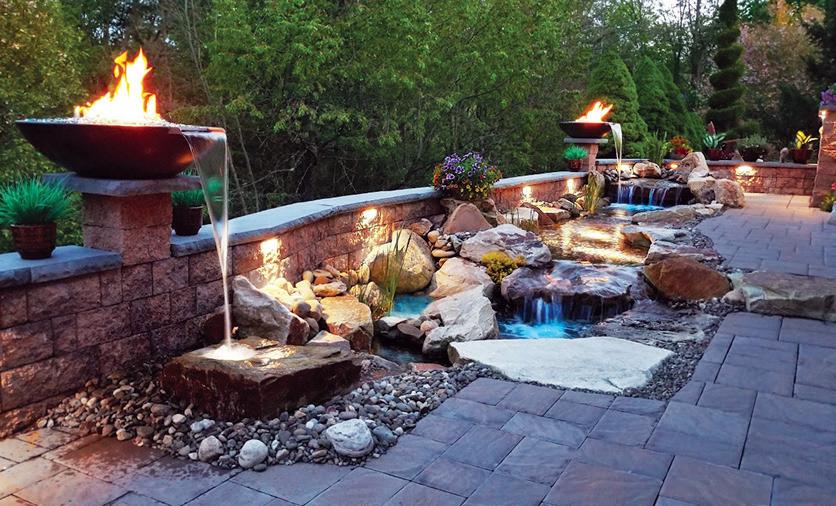
ances.
States, the
in the
low-carbon energy source is stored on-site, meaning it’s always accessible to help keep homes running regardless of severe weather or other interruptions to the power grid. Consider these ways to integrate the clean energy source into your home from the experts at the Propane Education & Research Council:
Whether you use a furnace, fireplace or boiler to heat your home, propane can power your heating source in any climate. Propane-powered heating sources are highly efficient, typically cost less overall due to their longer expected lifespans and emit fewer greenhouse gases than electric or wood- or oil-burning alternatives.
When power from the electric grid is interrupted, a propane-powered generator can provide supplemental power in as little as 10 seconds to keep vital systems like smoke and fire detection, re-


frigeration, heating and cooling, Wi-Fi and other health and safety equipment operational for several days and nights. Plus, propane doesn’t degrade over time, unlike diesel or gasoline, making it an ideal standby power fuel.
Because of their high performance and energy efficiency, propane-powered appliances such as cooking ranges and stoves, clothes dryers and tankless water heaters can increase the value of a home and decrease the strain on the electrical grid. Generating fewer greenhouse gas emissions than their electric counterparts, propane-powered appliances can heat and cool quicker, reduce standby losses and dry clothing faster, reducing energy usage and cost. (Family Features& Propane Education & Research Council)































































Renovations help homeowners customize their homes to align with their needs and wants. Remodeling may be necessary to replace outdated fixtures and features, address mistakes previous homeowners may have made, or to make a home more functional.
Homeowners often find it beneficial to hire professional contractors when they have work to be done around the house to ensure the job gets done to code and to their satisfaction.
Timelines for home remodeling projects vary depending on a number of variables, including the size of a crew as well as the scope of the project.
Once a project commences, the timeline can feel endless. The following are estimates of timelines for top remodeling projects to give homeowners an idea of how long their renovation projects may last, courtesy of Renofi, a company that provides a lending platform leveraged by credit unions nationwide to offer loans to consumers.
Kitchen: There are a lot of moving parts to a kitchen renovation, involving the services of electricians, plumbers, structural experts, and even interior design professionals. Not to mention the needs of craftspeople who can make custom cabinetry and countertops.
Kitchen remodels can take anywhere from six to 12 weeks.
Bathroom: The process of a bathroom renovation typically involves demolishing the old bathroom, removing old fixtures and starting

from the ground up. As with a kitchen remodel, bathroom jobs require the services of different professionals. That is why homeowners can expect three to 10 weeks for a bathroom, depending on the scope of the project.


Finishing a basement: Finishing a basement can add valuable living space to a home. Establishing a home theater space or man cave may require installing framing, insulation, utilities, drywall, flooring, and any additional needs if the finished basement will have a bathroom or necessitate additional plumbing. A finished basement project can last one to two months. But the good news is that typically the rest of the house is livable while the work is being done, so residents will not be disrupted.
Whole home remodel: Hogan Design & Construction says that a whole house remodeling project can take anywhere from 16 weeks to 24 weeks. More involved projects can take longer.
Remodeling a home often involves a considerable investment of time and money. Knowing how long a homeowner will be inconvenienced by the work can help the household plan accordingly.




























grass roots and maintain a healthy microbial composition in soil than to water the lawn daily, which leads to shallow roots and can wash away nutrients. But it is important for homeowners to recognize when their lawns are not getting ample water. Here are some signs a lawn needs a drink.
Visible footprints: Elasticity of the grass blades decreases when the lawn is not getting enough water. If you walk on the lawn and footprints do not bounce back in a short amount of time, you likely need to water.
Gaps between lawn and sidewalk: Lawn Pride says that the soil can shrink in drought conditions. This may be visible where the lawn abuts a driveway, sidewalk or even planting beds. If you walk along the perimeter of a lawn and notice a gap between the grass and hardscape, it is time to water.
Clumps of grass: It is a sign of drought stress when grass grows in clumps rather than uniformly across a lawn.
Presence of dollar spot fungus: Grass can become susceptible to this fungus, which also is called ascochyta leaf blight. It only develops in lawns with shallow grass roots caused by improper lawn watering. It’s noticeable when damage to the turf begins in the middle of the grass foliage.
Slow growth: A lawn that doesn’t seem to be growing well, or doesn’t need to be mowed as frequently, likely isn’t getting enough water.
Adequate watering can help a lawn develop strong roots and maintain grass health. Homeowners who have questions about their lawns and watering can consult with a landscaper or a lawn care service.











































































































aintaining the walls of your home is essential for both aesthetic appeal and structural integrity. Over time, walls can suffer from various types of damage, whether it’s from everyday wear and tear, accidents or environmental factors. From the more common drywall holes to texture damage, concrete wall cracks and water damage, understanding how to effectively address these issues is crucial for any homeowner. Proper repairs not only restore the appearance of your walls but also prevent further deterioration and potentially costly repairs down the line. Here are practical solutions for repairing different types of wall damage, ensuring your home remains in top condition.
Drywall hole repairs
Drywall hole repairs are among the most common wall repairs homeowners encounter. Many drywall holes can be easily patched with spackling or a drywall patch kit. For the ultimate spackling option, DAP Fast Dry Premium Spackling is a professional-grade spackling compound with a smooth, one-strike application that leaves a rock-solid coat that won’t sink, shrink or crack, offering superior impact resistance and is paint ready in as little as just 15 minutes. Another great solution for repairing drywall holes is the Eclipse Rapid Wall Repair Patch. Whether the damage is small from a picture frame nail or anchor or as large as doorknob damage, simply apply the patch and it’s paint ready

immediately. With Eclipse, projects can be completed faster with a permanent, messfree solution that offers superior impact resistance.
Texture damage repairs
Texture damage repairs are necessary when the wall’s surface texture is compromised, often after fixing cracks or holes. The challenge lies in matching the existing wall texture to create a professional look. For a seamless repair, try DAP’s 2in1 Wall & Ceiling Spray Texture for orange peel, knockdown and popcorn textures. Unlike competitive products on the market, DAP’s aerosol cans feature Aim Tech technology that offers a 60-degree adjustable nozzle angle to easily repair vertical, overhead and hard-to-reach areas with one can, providing users much flexibility when completing projects. Once dry, the wall can be painted to match the rest of the room. A useful tip is to practice on a piece of cardboard before applying the texture to



the wall to ensure you achieve the desired consistency and pattern.
Concrete wall repairs
Concrete wall repairs are typically needed when cracks or spalling occur, often due to settling or exposure to the elements. For small cracks, applying concrete repair caulk or epoxy filler can restore the wall’s integrity. Larger cracks may require chiseling out the damaged area and filling it with a concrete patching compound. Spalling, where the surface of the concrete flakes or chips away, involves removing the damaged material and applying a new layer of concrete. To ensure a durable repair, it’s essential to clean the area thoroughly before applying any patching materials and to use a bonding agent to help the new concrete adhere to the old.


Water damage repairs
Water damage repairs are critical not only for aesthetic reasons but also for preventing mold and structural issues. The first step in repairing water-damaged walls is to identify and eliminate the source of the moisture to prevent future problems. Once the area is dry, remove any damaged drywall or plaster and replace it with new material. It’s essential to treat the area for mold or mildew, using appropriate cleaning solutions, before proceeding with repairs. After replacing the damaged sections, apply a stain-blocking primer to prevent water stains from bleeding through the paint. For lasting results, ensure the area is completely dry before painting and consider using moisture-resistant materials in areas prone to dampness. (BPT)

















































































































































































































































































































































The meaning of the term “cozy” varies as it pertains to home decor. For some, cozy may mean intimate spaces with lots of quilts and throws. For others, cozy could indicate bright and airy spaces enhanced by plenty of fresh foliage. Regardless of how they define cozy, homeowners typically want their homes to be inviting and comfortable. With that in mind, the following are some ways to impart a cozy vibe to any living space.
Make use of a fireplace. Flames lap-


ping wood (or faux wood in the event of gas-powered fireplaces) can put anyone in a tranquil state of mind. Fireplaces add instant ambiance and make great places for people to congregate and engage in conversation. During warmer months when the fire isn’t blazing, decorative candles can be lit to mimic the same feel. Add texture in the design. Texture can be anything from a raised pattern on wallpaper to a knotty area rug to a mosaic piece of artwork. A home with texture tends to create cozier im-
pressions than one with all sleek and smooth surfaces.
Enjoy a soft rug. Although many design experts say hardwood floors or laminate options are easier for allergies and keeping a home clean, a soft rug underfoot can be welcoming. Rather than wall-to-wall carpeting, place area rugs in spots that can use some cozying up, such as beneath beds and even under the dining table.
Light candles. The warm, flickering light of candles adds cozy vibes in spades. According to The Spruce and Paula Boston, a visual merchandiser for Festive Lights, candles can be used throughout a home to create


instant atmosphere. Exercise caution with candles and fully extinguish them before retiring for the evening. Update bedding for the season. Crisp and light cotton and linen are cozy materials when the weather is warm. But when the temperature starts to dip, flannel or jersey bedding

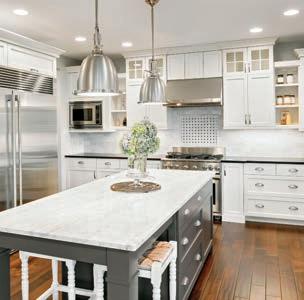




makes a bed that much more inviting, says Real Simple.
Invest in lots of pillows. Pillows can instantly make a spot more cozy, whether it’s the living room sofa or an outdoor lounging nook. Look for materials that are durable for the space in which they’re being used.
Think about warm lighting. The transition from incandescent light bulbs to halogen and LED is beneficial from an environmental standpoint. However, LEDs illuminate with a more stark, blue light that can seem clinical in home spaces. Look for bulbs where the “temperature” can be customized. The more the col-



or spectrum leans toward warm light, the more cozy a space will feel. This can be enhanced by putting some lights on dimmer switches, and toning down the brightness as needed. Install a bookshelf. Even for those who are strict devotees of e-readers, a shelf full of actual books interspersed with some well-placed knickknacks can make a room feel more cozy. Books add texture, the feel of hallowed halls and libraries, and visual appeal.
Making a home more cozy doesn’t have to be complicated. A few easy modifications can improve interior spaces.


















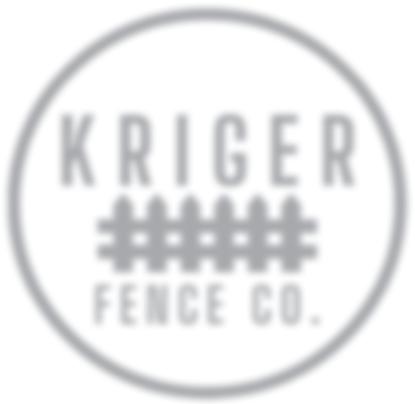













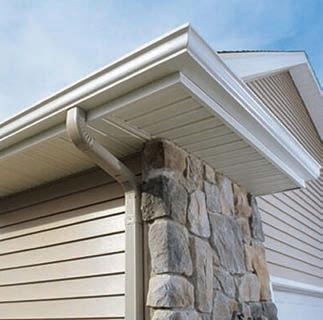






Homeowners know that the work involved to maintain
is never
The end of one
has a
dency to roll into the planning of another, and so it goes for years on end.
Fortunate are the homeowners who get to choose when to begin a renovation project, but it’s far more common that homeowners spot an issue and then realize it’s time to renovate. When it comes to bathrooms, which can be among the more expensive spaces to renovate in a home, homeowners can keep an eye out for various signs sug-
gesting the room needs a remodel. Mold and mildew: Mold and mildew is perhaps the most glaring sign a bathroom needs to be renovated or remodeled. Mold and mildew pose a notable threat to human health, as the United States Environmental Protection Agency reports that molds can cause allergic reactions. Individuals sensitive to mold may develop symptoms that mimic reactions to outdoor allergens like pollen, including sneezing, runny nose, red eyes, and dermatitis (skin rash). Mold also can trigger asthma attacks in people allergic to mold who have
the condition. Mold can grow in poorly ventilated bathrooms, such as those without a fan or ones in which fans are not working properly. Mold and mildew will return if it’s merely scrubbed away, so the underlying cause of mold must be addressed to prevent its return. Small signs of fading: Stains, peeling paint, cracked paint, and gaps in grout are small signs of fading that indicate a bathroom is in need of renovation if not a complete remodel. These issues also can serve as warning signs of larger issues, such as water issues and structural problems, so they should not be merely written off as minor problems or eyesores.


Rising water bills: Some signs a bathroom could use a little TLC are not necessarily confined to the room itself. If water bills are rising significantly and do not align with price increases or an
































































































































uptick in water consumption, homeowners may have leaking pipes. Such pipes might be beneath a bathroom sink or behind tiled walls. Discoloration on the walls, peeling paint or wallpaper and/or a musty odor may indicate leaks inside a bathroom wall. If coupled with rising water bills, these signs could be indicative of a significant issue that requires immediate attention.
Issues with tiles: Cracked or damaged tiles in the shower and bathtub or even on the floor are unsightly and also pose a safety hazard. Cracked floor tiles can lead to slips and falls, which can be especially harmful to older residents. And cracked tiles within the shower
and tub area can indicate water problems behind the walls or general disrepair. Such issues should be addressed before they escalate into something larger.
A dated vibe: Of course, some issues affecting a bathroom are not necessarily health or safety hazards but more an affront to homeowners’ grasp of current styles and trends. If walking into a bathroom unintentionally feels like stepping backward into a bygone era, then it’s probably time to consider a renovation or remodeling job.
Various signs can indicate to homeowners it’s time to consider a bathroom renovation.








Belgrade A.MLeonard
OldcastleArchitectural MoistureShieldComposite Decking SRWProducts
Bon BarretteOutdoorLiving LuxCraft
Tru-ScapesLandscapeLighting Techniseal LebanonTurf Elements



ActiveYardsFencing MoistureShieldDecking CedarTechWoodFencing




As much as you love your pets and work hard to make them part of the family, they’re also a big responsibility. Part of that responsibility includes setting up your home so it’s equal parts stylish (for you) and functional (for Fido).

















Show furry friends a little love, beyond the walks and snuggles, by making your home more pet friendly.
Set Up Their Space Near an Entry
It’s common for pet owners to desire a space to keep all their furry friends’ belongings and avoid clutter. Ensure convenience and cleanliness by establishing an area near the door where you can store leashes, collars, toys and more. Consider keeping a towel or two nearby for wiping paws (and snouts) after going outside. You can also keep your pets’ beds, food and water bowls in this space so it feels like their own little “home” when returning from a walk or going to sleep at night.
Consider Stain-Resistant Fabrics
From furniture to decor, avoiding fabrics that attract pet hair is a no-brainer for pet owners looking to escape a constant mess. Silk and velvet are virtual magnets for fur, while alternatives like leather offer more practical choices that are easy to clean and durable.
Install Resilient Flooring
Reduce your fear of zoomies causing damage to your floors by installing resilient flooring focused on reducing wear. Both durable and beautiful, a variety of Beautifully Responsible floors take on some of the burden of pet ownership with built-in durability for the



everyday and the unexpected. With options designed to bridge the gap between style and function, numerous water-resistant and waterproof floors give you and your pets room to live your best lives for years to come without wet shakes triggering worries. Plus, many resilient floors don’t flinch when it comes to addressing muddy paws, often only requiring the mud to be easily wiped away, without harsh cleaning products.
Decorate with Pets in Mind
Displaying Grandma’s fine China and your favorite sports memorabilia may not go hand-in-hand with pet ownership — that autographed baseball may look more like a chew toy than a treasured artifact. Instead, prioritize decor that’s washable and sturdy so you can avoid coming home to a delicate family heirloom shattered on the floor.
Pet-Proof the Yard
If you plan on your pets being outside on their own, it’s a good idea to carefully inspect your outdoor spaces before letting them roam. Look for gaps in the fence, identify potentially harmful plants and ensure outdoor structures like grills and furniture are secure.














































































































s the leaves begin to change and temperatures start to drop, it’s time to start thinking about preparing your home for the cooler months. With a few simple steps, you can ensure your haven of comfort stays warm, inviting and energy-efficient throughout fall and winter.
Consider these home projects from the experts based on Zonda’s 2024 Cost vs. Value Report to get your home ready for the cooler seasons.
Upgrade Your Garage
New garage doors typically come with energy-efficient features and advanced security measures but are also relatively low-



cost updates compared to the significant perceived value and resale benefits. In fact, replacing a garage door boasts a 193% return on investment, according to the report. Pairing new garage doors with updated trim can also offer a tight seal from exterior elements such as wind, snow and water. Insulate for a Warmer Interior
Insulated siding can play a crucial role in enhancing your home’s thermal performance. By providing an additional layer of protection, it helps reduce heat loss, ensuring your home remains warm and your energy bills stay manageable. Plus, according to the report, vinyl siding replacement has an 80.2% return on investment. An option











also contributing to better energy efficiency. In addition, the solid core reduces external
and is designed to endure extreme weather conditions.
L eak-Proof Your Home’s Windows Windows can be substantial energy drainers and let warmth out when they’re not properly sealed. If you notice a draft coming in around your windows, sealing cracks or gaps with aesthetically pleasing trim can make a significant difference in keeping the heat in and chilly air out. For extreme drafts, consider replacing windows altogether, which can provide sellers with an average 67.1% return on vinyl window replacement, according to the report.
Shield Your Roof
Your roof is your home’s first line of defense against the elements. Check for damaged shingles or tiles and make necessary repairs to prevent leaks. If a roof replacement is needed — which provides a 56.9% return on investment using asphalt shingles, according to the report — consider incorporating a high-quality roofing underlayment to provide an extra layer of protection against water, heavy snow and ice. This underlayment serves as a secondary water protective layer, energy-saving radiant barrier and above-deck roof insulation blanket that is all-in-one. It incorporates an anti-glare coating in cool blue, making it easier and safer to install than alternative shiny radiant barrier options. (Family Features & Westlake Royal Building Products)













•
Renovations that make homeowners and residents of a home happy are always worth the investment. Though it’s certainly true that projects that create more functional, usable space and add comfort and convenience are worth the price, such renovations are even more beneficial if they provide a good return on homeowners’ financial investment. Returns are often cashed in when homeowners put their homes up for sale, and each year Remodeling magazine releases its “Cost vs. Value Report,” which considers a wealth of data across the United States to deter-



mine which renovations return the highest percentage of homeowners’ financial investment. According to the “2024 Cost vs. Value Report,” the following are five projects that provide a strong return on investment (ROI).
1. Garage door replacement: The average job cost for this project is slightly more than $4,500 but the project is valued at $8,751, providing an especially high 194 percent ROI.
2. Steel door replacement: Remodeling magazine notes that a steel entry door replacement is worth double what it was worth







































• Core Aeration • Overseeding • Liming • Perimeter Pest Control



in 2023. This project offers a 188 percent
on an
investment of $2,355.
3. Manufactured stone veneer: A manufactured stone veneer is a man-made product that appears as if it’s natural stone. Many homeowners prefer manufactured stone veneer to natural stone because of the price, as the former is less expensive and easier to install, which means lower labor costs as well. The comparatively low cost of manufactured stone veneer is perhaps one reason why it averages a roughly 153 percent ROI on an average cost of just more than $11,000.
4. Grand entrance upscale (fiberglass): Few things are as awe-inspiring as an impressive entryway, and upgrading to a grand fiberglass entrance door provides a 97 percent ROI. Components of these entryways can vary, but Remodeling magazine notes the



project may entail removing an existing entry door and cutting and reframing the opening for a larger with dual sidelights.
5. Minor kitchen remodel: According to the “2024 U.S. Houzz & Home Study” from Houzz Research, kitchens were the most popular rooms to renovate in 2023. There’s no denying the appeal of a newly renovated kitchen, and homeowners considering such a project may be happy to learn that a minor kitchen remodel that costs an average of around $27,000 provides a 96 percent ROI.
Bankrate.com notes that minor kitchen remodels typically keep the current kitchen design, size and layout intact, but these projects may involve painting walls, refreshing backsplash, replacing lighting and plumbing fixtures, and changing cabinet hardware and facades.























ects of any size with precision and care. projectsofanysizewithprecisionandcare.
Whether you need routine law a n maintenance, a Whetheryouneedroutinelawnmaintenance,a complete landscape overhaul, or extensive excav a ation completelandscapeoverhaul,orextensiveexcavation work, our skilled team is equipped to deliver topwork,ourskilledteamisequippedtodelivertopquality t results tailored to your specifi f c requirements. qualityresultstailoredtoyourspecificrequirements.
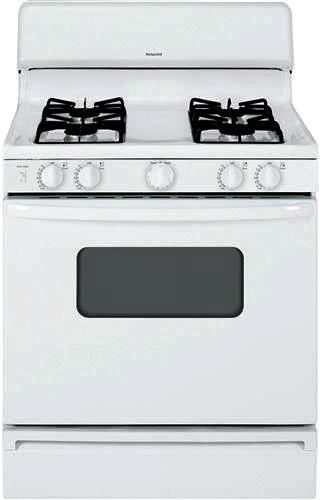

athroom renovations are significant undertakings that cost homeowners sizable amounts of money. According to Remodeling magazine’s “2024 Cost vs. Value Report,” the average cost of a mid-range bathroom remodel across the United States in 2024 is around $25,000. Homeowners who want an upscale remodel can expect to spend around $80,000 in 2024. Such a large financial commitment underscores the significance that home-


owners get their bathroom remodels right. Mistakes will only increase the already substantial financial commitment homeowners must make, so it can help to keep these dos and don’ts in mind. DO work with a certified, reliable contractor. YouTube tutorials can give a false impression of renovation projects in relation to their degree of difficulty. Renovations as significant as bathroom remodeling projects require the skills and experience of professionals. DON’T ignore return on investment









































(ROI). There’s no denying certain projects provide a better return on investment than others. The upscale bathroom remodel with a nearly $80,000 price tag noted above may prove awe-inspiring, but homeowners looking to get as much of their money back at resale should know that such a renovation recovers 45 percent of homeowners’ initial investment. By contrast, the mid-range bathroom remodel yields a 74 percent return according to Remodeling magazine. Though ROI may not be the deciding factor for every homeowner, it definitely merits consideration when planning a project.
DO pay attention to the details. Plan-


ning a bathroom renovation can be overwhelming, as homeowners have many decisions to make before the project even begins. For example, homeowners will have to choose a vanity, fixtures for the vanity, light fixtures, toilet, showerhead, and an assortment of additional features when planning
the project. Contractors work with clients to show them all of their options, and some will offer advice on products or materials if asked. But homeowners are ultimately the ones who will have to live with the choices they make during the planning process, so these details merit ample consideration and should not be treated as trivial.
DON’T emphasize cost over quality. Homeowners should do their best to establish a renovation budget and stay within that budget, but quality materials should take precedence over cost. Many budget-friendly furnishings and accessories are durable and aesthetically appealing, so homeowners need not enter
a bathroom renovation thinking highend products are their only options. But it’s important that homeowners recognize the conventional wisdom that buyers get what they pay for when it comes to home renovations. If homeowners try to cut costs on materials, they may need to update or redo the bathroom much sooner than they would if they invest in quality furnishings and accessories the first time around.
Bathroom renovations can be costly. Remembering some simple dos and don’ts can give homeowners the peace of mind that their renovation investment will result in an impressive, durable space.







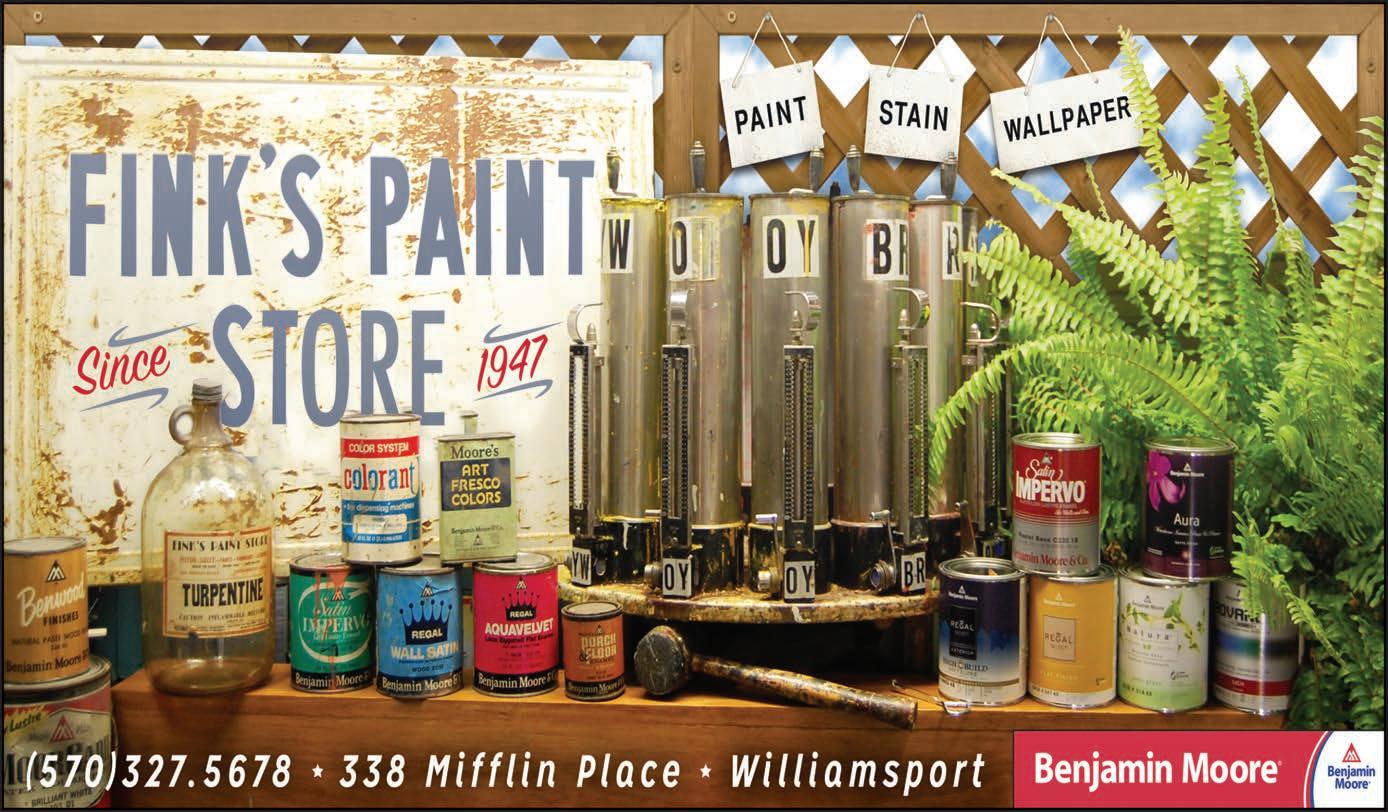
Hours: Monday-Friday 7:30am-5:30pm • Saturday 7:30am-3:00pm | www.finkspaint.com

Clutter has a way of taking over a home. As time goes by, items that are not stored or discarded when they’ve lost their utility can gradually take over a space, creating a claustrophobic, cluttered feeling that can affect how people feel in their homes.
Clutter is not something to be taken lightly. A 2010 study published in the journal Personality and Social Psychology Bulletin found that women who characterized their living spaces

as cluttered or marked by unfinished projects were more likely to experience fatigue and depression than women who described their homes as restful and restorative. Though clutter is often discussed in terms of removing it, there’s also many ways to prevent it in the first place.
Schedule weekly cleaning sessions. Cleaning is a chore few look forward to, and that reluctance may be a byproduct of infrequent cleanings. The less a home is cleaned, the longer






























cleaning sessions take when individuals get around to it. Weekly cleaning sessions can help prevent items from stockpiling and creating a cluttered look.
Discard items when they’re no longer used. Holding on to items you no longer use will eventually contribute to the buildup of clutter. That’s a lesson parents know well, as kids outgrow toys, which can then pile up and contribute to overcrowded toy chests and play rooms. Adults also have a hard time discarding their own toys, including old devices. As kids outgrow toys, let them choose which ones to discard before they’re replaced with new items. The same goes for adults, who can wipe old devices like tablets, smartphones and laptops clean and discard them once they’ve purchased replacements.
Make it easy to find stored items. Even the most well-organized person can fall victim to clutter if stored items prove difficult to find. When revamping storage systems, choose clear, stackable drawers so you won’t make a mess as you look for stored items you can’t find. Clear, stackable plastic bins and drawers make it easier to find what you’re looking for, reducing the


likelihood that items will end up on the floor or strewn about. If you don’t want to replace existing storage bins, label them if they’re not clear to make it easier to identify what’s inside.
Donate clothing. Much like kids’ toys and adults devices should be discarded when they’re no longer used, old clothes can be donated to create more storage space and prevent the buildup of clutter. Clutter is often described as something visible to the naked eye, but clutter can also build up in dresser drawers and behind closet doors. Periodically go through closets and dressers and remove items you no longer wear, donating them if they’re still in good shape and discarding them if they’re not.
Clutter can quickly take over a home. A proactive approach that emphasizes clutter prevention can make for a more relaxing and restful home.




















• Powerful Insulation Capability
• Energy Savings
• Completely Airtight
• Moisture Barrier
• Mold Will Not Survive
• More Durable
• Eco-Friendliness Of Spray Foam
As the leaves change color in the crisp autumn air, let the season inspire you to add vibrant hues to your garden. Creating a colorful fall garden is easy and budget-friendly with impatiens. These vivid, cheerful blooms illuminate even the shadiest garden beds or patios, adding a burst of living color to your outdoor spaces.
Whether you’re a seasoned gardener or a beginner, choose top-performing varieties like Beacon’s Impatiens from PanAmerican Seed. Available in eight colors and eight mixes, you can fill baskets, window boxes and shade landscapes with confidence. Follow the expert tips below to help your garden thrive this fall by incorporating impatiens.
Why impatiens?
Impatiens offer high resistance to impatiens downy mildew (IDM) disease, ensuring your garden remains healthy and flourishes over time. No more money spent replacing failing flowers. Plus, impatiens are self-cleaning plants that will continue to bloom profusely all season long!
Impatiens are also a cost-effective choice because they offer continuous


color while filling larger spaces and baskets. With the ability to grow up to 18 inches tall and spread 14 inches wide, they cover a lot of ground with minimal effort and expense.
Choosing budget-friendly impatiens isn’t the only way to save on gardening. Use unexpected objects like upcycled containers to add a unique look to your garden without the added cost for flowerpots.
Fill your spaces with nonstop color
As the last days of summer slowly fade away, brighten up a shady porch with tons of color by planting seasonal orange-colored impatiens and other shade-loving plants. Orange impatiens, for example, offer a bright hue with green foliage for your fall garden decor. They look beautiful planted in rustic, decorative flower pots or barrels.
If you’re looking forward to a full-














shade garden of bright, beautiful blooms, you’ll want to pair vibrant pinks and reds to make this space pop and come to life.
You can also celebrate the fall season by incorporating hay bales, pumpkins and gourds, bare branches and other flair to your containers. Placed at your doorway, this stunner can greet trickor-treaters in October or welcome Thanksgiving guests.
Top impatiens gardening tips for a flourishing fall garden
You can nurture your impatiens to encourage growth and health through a few important steps. Impatiens make for excellent landscape, border and
container plants. They prefer loose, moist and well-drained soil and do best in partial to deep shade. The closer impatiens are, the taller they will grow, so space accordingly. For flower beds, plant 8 to 12 inches apart so the plants will stay low to the ground. If you want them to grow upright, you can plant them about 6 inches apart. If you’re using them as ground cover, you can space them 10 to 12 inches apart. Once your impatiens are in the ground, they’ll need at least 2 inches of water a week. If the flowers show a bit of wilt, no worries! A good, long soak will perk up plants in no time. (BPT)





Take a step up to the XT2 LX46 featuring a 46˝ heavy-duty AeroForce fabricated twin-blade cutting deck.

Ken Bergren, Inc 1360 Dix St Williamsport, PA 17701
www.KenBergrenInc.com 570-326-2874
Ken Bergren, Inc 1360 Dix St Williamsport, PA 17701 www.KenBergrenInc.com 570-326-2874





































Property crimes are perhaps more common than people may realize. Data from the Council on Criminal Justice indicates residential burglaries declined by 26 percent in 2023 compared to 2019. However, the Federal Bureau of Investigation indicates there were nearly seven million property-related crimes committed in 2019, which means there were still more than five million such crimes committed in 2023.
Homeowners recognize the importance of protecting themselves, their loved ones and their valuables. Locking doors at night is one measure of protection anyone can employ, but there’s a host of additional steps individuals can take to make their homes less vulnerable to criminals.
Embrace some simple solutions. The Insurance Information Institute recommends utilizing simple security devices such as padlocks, door and window locks, grates, bars, and bolts. These devices may not prevent burglars from entering a home, but they can increase the amount of time it takes criminals to gain access. That can be enough to discourage criminals and also provide extra time for homeowners and neigh-


bors to see and report suspicious individuals lurking around homes.
Periodically assess existing security devices. Locks, security cameras and additional devices are effective deterrents, but only if they’re working properly. It’s easy to overlook security devices, but routine inspections can ensure they continue to serve as a security blanket between residents and criminals.
Install a burglar alarm. Burglar alarms can be effective deterrents and even help homeowners save money on their insurance policies. The Electronic Security Association estimates that home alarm systems can save homeowners





















as much as 20 percent on their insurance policies. Such savings can offset the cost to purchase and install burglar alarms. Homeowners who doubt the efficacy of burglar alarms as a crime deterrent should know that a study from researchers at the University of North Carolina, Charlotte examining the habits of burglars found that 60 percent decided against burglarizing properties they learned had burglar alarms.
Trim privacy trees and shrubs around the perimeter of your home. Privacy trees and shrubs can make it harder for passersby to see into a home from a nearby street or sidewalk. However, such features also can provide hiding
space for criminals looking to gain access to a property. Routinely trim trees and shrubs near doors and windows so they are not inadvertently providing cover for criminals.
Light up the outside. Exterior lighting is wildly popular among homeowners for its aesthetic appeal. But lights around walkways and throughout a landscape also illuminate the exterior of a home, making it harder for criminals to get around without being seen. Spotlights and motion-detection lights can alert homeowners if someone is outside, and such lighting also can make it easier to spot criminals on exterior cameras, which can deter burglars.

and air
No plants, no deck furniture and no lawn mowers. Just top of the line tubs, showers, toilets, water heaters, boilers, furnaces and accessories from names you know and trust. So if you have a plumbing or heating project, we can help and you won’t need a map to find what you need.

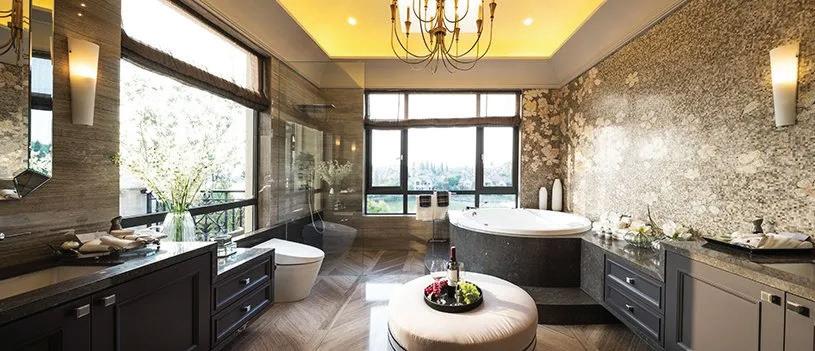
Family owned and operated for over 50 years!
We have 8 branches throughout Central Pennsylvania to serve you. All eight branches maintain an extensive local inventory for quick service and we employ skilled sales representatives.
Quality plumbing and heating products at the right price and the highest level of service.













home is an expression of you,
and your lifestyle. When it comes to personalizing your home’s aesthetic, try leaning into your senses to inspire change within your space.
Inspiration can be found everywhere around you — from taking cues from Mother Nature to “shopping” your own house or, with a little help from Air Wick, finding and incorporating your home’s signature scent.
Give yourself a residential refresh with these tips:
Rearrange Living Spaces
Breathing fresh air into a room doesn’t always require a complete overhaul, or even any construction or DIY projects. Sometimes all you need is a little rearranging. Shifting furniture to better suit your needs or let more natural light in can significantly improve the space’s aesthetic.
Additionally, the items you currently own are most reflective of your style; try “shopping” your own house by repurposing items from other areas or rooms to give them a fresh feel. When decor pieces are overused in one spot, they may feel brand new in a different space. These are practical and cost-effective tactics to create a new and inviting space for both you and any guests entering your home.
Introduce Plants and Greenery


When sourcing your design inspiration from nature, adding greenery is an inherent way to bring in the beauty and freshness of the great outdoors. To personalize your home with plants, visit a nursery or local flower shop and choose ones that are appealing to you based on their shape, color or size. Live plants offer multiple benefits, like naturally purifying the air, and studies have shown numerous therapeutic benefits of spending time with nature. Therefore, designing with natural elements, like house plants or flowers, can bring a sense of serenity into your home.
Find Your “Scentscape”
A home upgrade rooted in nature in-
See REFRESH on Page 38






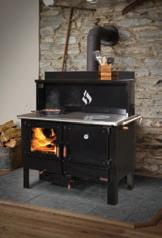


































































cludes more than just what you can see and feel, it also includes engaging the sense of smell. One of the latest home decor trends, “scentscaping,” is growing in popularity as a way for individuals to enhance the ambiance of their homes through tailored scent.
to add a bespoke vibe for your home that reflects your personal style, in turn creating a welcoming atmosphere.”








“Scent is an often-overlooked aspect of design,” said Egypt Sherrod, HGTV personality who is both an interior designer and real estate broker, and Air Wick partner. “People tour homes and experience spaces with all their senses. It adds a new layer to home personalization, as an authentic fragrance experience often heightens the aura of your space beyond its physical layout. Scentscaping is the perfect way
With innovative devices designed to deliver carefully blended scents like Air Wick’s Advanced Plug-In Scented Oil, you can enjoy long-lasting pulses of scents inspired by nature in the comfort of your home for up to 60 days on low setting. With anti-fading technology, an on-demand boost button and adjustable intensity settings, you’ll notice the fragrances from the first drop to the last.
Introducing color to a room can transform its look, and the scale of change is







up to you. You might repaint the entire space, simply paint an
or even just spruce up a corner with a pop of color. Incorporating accessories or decorative elements with new colors can also create some variety, such as including pops of seasonal-inspired colors in artwork and textiles.
Switch Out Light Fixtures
A room’s lighting is an important detail for personalizing the type of mood and ambiance you are trying to achieve. Swapping out light fixtures for dimmers, for example, can create a brand new atmosphere, allowing you to adjust the light to the time of day and for your intended experience. Consider updating old lighting fixtures with new ones to enhance the presence of
natural light or changing the bulb wattage to further impact the mood. Embrace the Scent of the Season If you tend to make frequent edits to your home’s design, you may also find the idea of experimenting with different fragrances appealing. A short-term scent can be ideal for seasonal swaps, like trading fresh spring blooms for sweet summer citrus, for example. Lasting for up to 45 days on low setting, Air Wick’s Essential Mist Diffuser fills the room with a gentle, fragrant mist with natural essential oils so you can set it and forget it. Adjustable settings are included on the device, and the cordless and portable design allow it to blend seamlessly into any home decor. (Family Features & Air Wick, photo courtesy of Shutterstock)

Serving Lycoming and Surrounding Counties Since 1946











































